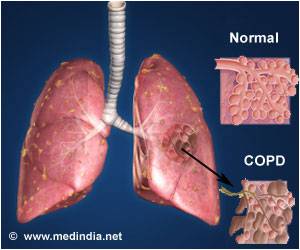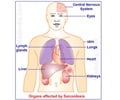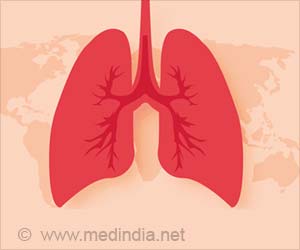
‘Every year, over 10 million physician visits, 1.5 million emergency department visits, and nearly 700000 hospital stays are linked to chronic obstructive pulmonary disease (COPD) in the US.’
Tweet it Now
Written by 28 leading US experts in the field of respiratory health, the Commission provides the first comprehensive look at COPD care in the USA by interviewing patient representatives, caregivers, health-care providers, insurance and pharmaceutical companies to identify the challenges patients face on a daily basis, and how these could be resolved. "This report reveals a real patchwork of care for patients with chronic obstructive pulmonary disease. The disease is the third leading cause of death in the USA, and disproportionately affects some of society's most vulnerable people, yet many patients lack access to basic therapies to improve their quality of life," says Dr MeiLan K Han, lead author of the Commission from the University of Michigan, Ann Arbor, MI, USA.
"As a physician, I can discuss best treatments with my patients, only to later find out it isn't covered by their insurance, or the co-pay is simply too high. This report aims to move us from debating what ideal care could look like, back to a discussion of what patients are actually facing on a day to day basis."
Chronic obstructive pulmonary disease (COPD) is an umbrella term used to describe progressive lung diseases including emphysema and chronic bronchitis. People with COPD suffer from increasing breathlessness and treatment usually includes drugs such as inhalers and pulmonary rehabilitation. COPD can be due to a number of factors, including smoking but also other environmental causes such as prolonged exposure to wood smoke or air pollution.
About 15 million adults (6.5% of the population) in the USA have a diagnosis of COPD, but some studies have found that up to 28.9 million people have evidence of pulmonary obstruction, suggesting that over half of Americans with COPD are undiagnosed. The disease disproportionately affects people from lower socio-economic backgrounds and older adults.
Advertisement
In addition, pulmonary rehabilitation is repeatedly described by patients as the most helpful intervention in terms of improving their quality of life. But access is still limited because of a shortage of programmes that are geographically convenient for patients, and variable insurance coverage.
Advertisement
Recent requirements by Medicare have focused on reducing the rates of hospital re-admission, but the report authors say most re-admissions for COPD are due to poor access to care or support outside hospital, and that preventing admission in the first place through improved diagnosis, access to treatment and care should be a priority.
The authors say that caring for patients will require better education for patients and physicians to improve diagnosis and treatment. They add that better coordinated action among insurers, the pharmaceutical industry and physicians is needed to reduce the financial burden on patients which could in turn increase adherence to medicines, and ultimately reduce overall healthcare spending.
Finally, the author say that more research is needed to understand the disease and develop new treatments. Unlike other chronic diseases where the amount of funding more or less matches the burden of the disease, COPD ranks 14th most funded research category by the National Institutes of Health (NIH), despite being the third leading cause of death in the USA (figure 5).
Source-Eurekalert













